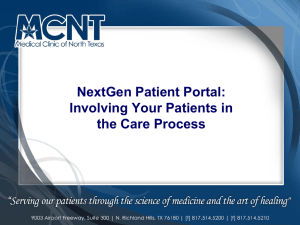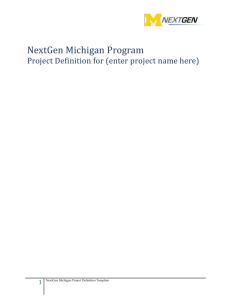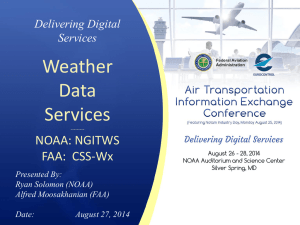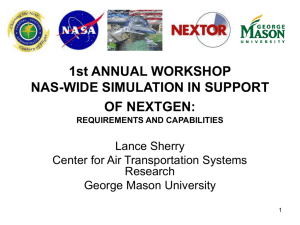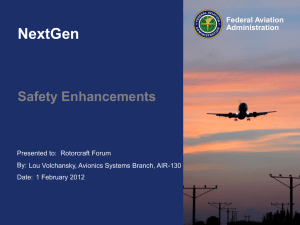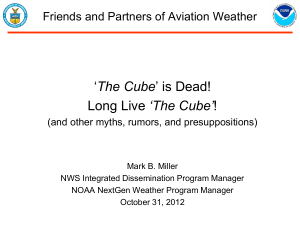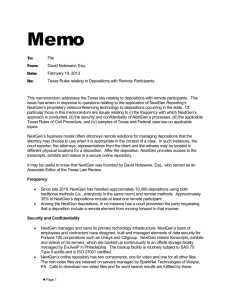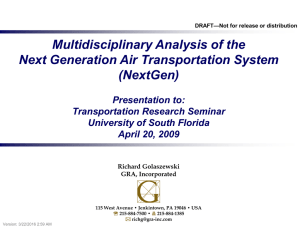nextGen T stuff - DDI 2012 CO
advertisement
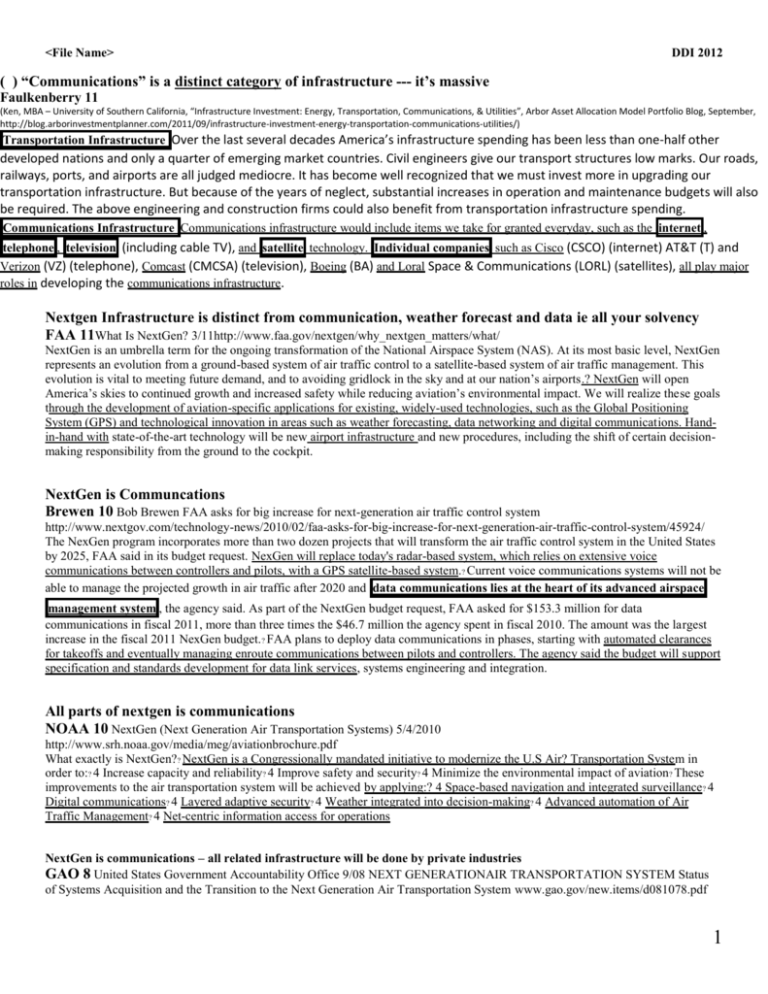
<File Name> DDI 2012 ( ) “Communications” is a distinct category of infrastructure --- it’s massive Faulkenberry 11 (Ken, MBA – University of Southern California, “Infrastructure Investment: Energy, Transportation, Communications, & Utilities”, Arbor Asset Allocation Model Portfolio Blog, September, http://blog.arborinvestmentplanner.com/2011/09/infrastructure-investment-energy-transportation-communications-utilities/) Transportation Infrastructure Over the last several decades America’s infrastructure spending has been less than one-half other developed nations and only a quarter of emerging market countries. Civil engineers give our transport structures low marks. Our roads, railways, ports, and airports are all judged mediocre. It has become well recognized that we must invest more in upgrading our transportation infrastructure. But because of the years of neglect, substantial increases in operation and maintenance budgets will also be required. The above engineering and construction firms could also benefit from transportation infrastructure spending. Communications Infrastructure Communications infrastructure would include items we take for granted everyday, such as the internet , telephone , television (including cable TV), and satellite technology. Individual companies such as Cisco (CSCO) (internet) AT&T (T) and Verizon (VZ) (telephone), Comcast (CMCSA) (television), Boeing (BA) and Loral Space & Communications (LORL) (satellites), all play major roles in developing the communications infrastructure. Nextgen Infrastructure is distinct from communication, weather forecast and data ie all your solvency FAA 11What Is NextGen? 3/11http://www.faa.gov/nextgen/why_nextgen_matters/what/ NextGen is an umbrella term for the ongoing transformation of the National Airspace System (NAS). At its most basic level, NextGen represents an evolution from a ground-based system of air traffic control to a satellite-based system of air traffic management. This evolution is vital to meeting future demand, and to avoiding gridlock in the sky and at our nation’s airports.? NextGen will open America’s skies to continued growth and increased safety while reducing aviation’s environmental impact. We will realize these goals through the development of aviation-specific applications for existing, widely-used technologies, such as the Global Positioning System (GPS) and technological innovation in areas such as weather forecasting, data networking and digital communications. Handin-hand with state-of-the-art technology will be new airport infrastructure and new procedures, including the shift of certain decisionmaking responsibility from the ground to the cockpit. NextGen is Communcations Brewen 10 Bob Brewen FAA asks for big increase for next-generation air traffic control system http://www.nextgov.com/technology-news/2010/02/faa-asks-for-big-increase-for-next-generation-air-traffic-control-system/45924/ The NexGen program incorporates more than two dozen projects that will transform the air traffic control system in the United States by 2025, FAA said in its budget request. NexGen will replace today's radar-based system, which relies on extensive voice communications between controllers and pilots, with a GPS satellite-based system.? Current voice communications systems will not be able to manage the projected growth in air traffic after 2020 and data communications lies at the heart of its advanced airspace management system , the agency said. As part of the NextGen budget request, FAA asked for $153.3 million for data communications in fiscal 2011, more than three times the $46.7 million the agency spent in fiscal 2010. The amount was the largest increase in the fiscal 2011 NexGen budget. ? FAA plans to deploy data communications in phases, starting with automated clearances for takeoffs and eventually managing enroute communications between pilots and controllers. The agency said the budget will support specification and standards development for data link services, systems engineering and integration. All parts of nextgen is communications NOAA 10 NextGen (Next Generation Air Transportation Systems) 5/4/2010 http://www.srh.noaa.gov/media/meg/aviationbrochure.pdf What exactly is NextGen?? NextGen is a Congressionally mandated initiative to modernize the U.S Air? Transportation System in order to:? 4 Increase capacity and reliability? 4 Improve safety and security? 4 Minimize the environmental impact of aviation? These improvements to the air transportation system will be achieved by applying:? 4 Space-based navigation and integrated surveillance ? 4 Digital communications? 4 Layered adaptive security? 4 Weather integrated into decision-making? 4 Advanced automation of Air Traffic Management? 4 Net-centric information access for operations NextGen is communications – all related infrastructure will be done by private industries GAO 8 United States Government Accountability Office 9/08 NEXT GENERATIONAIR TRANSPORTATION SYSTEM Status of Systems Acquisition and the Transition to the Next Generation Air Transportation System www.gao.gov/new.items/d081078.pdf 1 <File Name> DDI 2012 In 2003, Congress mandated the creation of JPDO,4 housed within FAA but involving several federal partner agencies, for the agencies to conceptualize and plan for NextGen. The previous ATC modernization program largely consisted of FAA’s efforts to acquire more sophisticated ATC equipment with a 10-year planning horizon. NextGen also includes the acquisition of ATC systems. Moreover, NextGen is a multidecade, multiagency effort to transform the current air traffic system to the next generation air transportation system by moving from largely ground-based radars to precision satellite-based navigation and includes digital, networked communications and an integrated weather system. NextGen involves the coordinated research activities of multiple federal agencies, including NASA, FAA, and the Departments of Commerce, Defense, and Homeland Security. To achieve the NextGen vision, JPDO was charged with coordinating research activities of the federal agencies in developing the 20-year research and development program for NextGen. FAA will play the central role in implementing NextGen, as it will be responsible for acquiring, integrating, and operating the new ATC systems. Industry stakeholders will also play a key role in implementing NextGen because they are expected to develop, finance, and operate many of the new NextGen systems that will need to be installed in aircraft. JPDO reported in 2006 that the total cost for NextGen infrastructure may range from $15 billion to $22 billion. The agency also noted that it expects a corresponding cost to system users, who will have to equip themselves with the advanced avionics necessary to realize the full benefits of some NextGen technologies, in the range of $14 billion to $20 billion. 2
